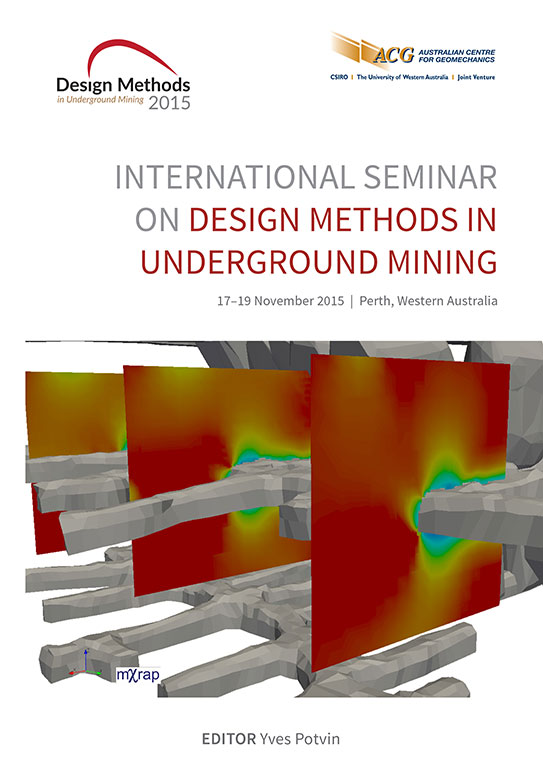Discrete event simulation — a tool to support the design of complex production and logistic processes; its application in underground mine design

|
Authors: Quan, K; King, G; Schrimpf, T |
DOI https://doi.org/10.36487/ACG_rep/1511_27_Quan
Cite As:
Quan, K, King, G & Schrimpf, T 2015, 'Discrete event simulation — a tool to support the design of complex production and logistic processes; its application in underground mine design', in Y Potvin (ed.), Design Methods 2015: Proceedings of the International Seminar on Design Methods in Underground Mining, Australian Centre for Geomechanics, Perth, pp. 443-462, https://doi.org/10.36487/ACG_rep/1511_27_Quan
Abstract:
Computer simulation modelling has been applied to a wide range of mining, mineral processing and transportation projects. These models have become valuable, as decision support tools, during the planning and design phases of any mining project along the entire value chain from orebody to customer. The significant capital costs associated with such projects, and the undesirable consequences of inopportune decisions, make computer modelling a ‘must-do’ activity in design optimisation. Mines are complex systems of mobile and fixed equipment operated by humans, each with their own operating rules, schedules, productivity rates, and maintenance requirements. The overall performance of the system depends on many factors and it is the efficiency with which all of the unit operations within the system interact that often determines whether or not the system is optimised or balanced. Traditional methods of analysis often use averages, which do not account for the ‘peaks and valleys’ in system performance. A computer simulation model makes it possible to predict the performance of a complex system by mimicking the variability and randomness in its operation, which are more often than not the causes of interruptions in system performance. Using a simulation model to guide our decisions, we can move stepbystep toward a balanced system design; one which minimises capital investment, operating costs, inventory requirements, and opportunity costs of idle equipment. This paper presents some background on the advantages of using computer simulation modelling with some examples of Amec Foster Wheeler’s practice in its application on underground mining projects.
References:
Priyadarshi, H 2012, Underground mine planning, University of British Columbia, Vancouver, BC.
Quan, K & Durston, K 2003, Dynamic simulation modelling as a decision support tool for mining design and optimization, a case study: De Beers Canada Snap Lake Diamond Mine, Canadian Institute of Mining, Metallurgy and Petroleum, Saskatoon, Canada.
Sage, AP & Rouse, WB 2014, Handbook of systems engineering and management, 2nd edn, John Wiley & Sons Inc., Hoboken, NJ.
© Copyright 2025, Australian Centre for Geomechanics (ACG), The University of Western Australia. All rights reserved.
View copyright/legal information
Please direct any queries or error reports to repository-acg@uwa.edu.au
View copyright/legal information
Please direct any queries or error reports to repository-acg@uwa.edu.au